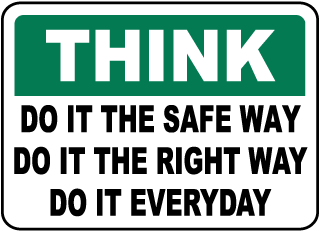Can you imagine a world without
technology? Technology has been advancing, and we don’t know what inventions
technology creators have in store for us. Technology has impacted our lives. We
transitioned from print to media, for entertainment, reading news, and
communication. The means of technology has made our lives easier, such as
paying bills online, shopping online, marketing your business online, catching
up with old friends, and so forth. In addition, it is a great way for finding
information, all in which you can get in a matter of minutes online.
Nonetheless, we question whether or not what we do on the internet is safe?
The digital world pose numerous of
risk factors in which we need to take precautions. Factors associated with the
digital world are identity theft, identity fraud, viruses, and scams. The
difference between identity theft is when a thief access your personal
information to impersonate you. In other words, the thief creates multiple
accounts under your name. This can also lead to gaining access and taking
control of your existing accounts. Meanwhile, identity fraud is when a thief
uses your details to create a fictitious person in order to defraud merchants.
A thief/hacker only need to gather a few of your information, before they have
enough to purloin your identity. Another precaution people in the digital world
need to be aware of are viruses. Without a reliable antivirus protection,
you’re at a risk for viruses. A virus is piece of code in which it is capable
of coping itself and corrupting the system or destroying data. A scam is a
dishonest scheme, fraud. Some scams that I have known of is "Win a free
trip from United Airlines" and "Free tickets from Delta Airlines." Viruses and scams can be transmitted from
instant messages, emails, documents, fake antivirus, flash drives, and the list
continues. With multiple antivirus protection available, we can keep our
computers safe from threats. According to, Stephen Balkam, CEO, Family
Online Safety Institute, he stated that "The internet is no more a
'lawless jungle.' Everyone is free to say and type down whatever they want to
say. However, sometimes what we post on the internet affects someone in the
wrong way and cause them harm. Therefore, that is why there are laws and
consequences built in for Fair User Practices and Copyright Issues,
Digital Safety and Privacy, Cyber-bullying, and Phishing and Pharming.
Children are utilizing technology, and I want to teach them to be safe online starting with Fair User Practice and Copyright, Digital Safety and Privacy, Cyber bullying, and lastly, Phishing and Pharming. As a future educator, I feel the need touch basis on these topics because it is crucial and to let my students understand the consequences of what will happen. I want to be a model to my students to practice digital safety and to express that once we post something online, it is up there for everyone to see, and we can't take back what we post.
In order to teach
my students what is digital safety, I will define it in simple words in order
for them to understand it. I could create handout for them based on all four
topics and ask them to create skits. I will show my students these videos,
especially since they are fit for the grade level I want to teach in. I feel
that with these videos, my student will be keen to watching, comprehending, and
learning what digital safety is and how we can be safe online. According to,
Stephen Balkam, he expressed "we must take responsibility - to play our
part - in creating a better, richer, more civil online experience than the one
we have today" (2016). We should not be afraid to teach children what’s
right and wrong, we must take initiative and be open and honest about the
internet. As teachers, we need to talk, empower, and educate them.
Overall, being aware of
digital safety allows you to be mindful and what you post. We must think before
we say something and think again before uploading it to the internet. The
internet can serve as a powerful learning instrument and we must use it to it
is advantage, in a good way though. We are all open to harm and threats. We all
know it, but not everyone takes action. Having the knowledge of learning the
four aspects presented, I am able to stray away from those threats and pass on
my knowledge to students and everyone else.
References:
Balkam, S. (2016). Play Your Part For Safer Internet Day. Huffington Post. https://www.huffingtonpost.com/entry/play-your-part-for-safer_b_9190526.html
Balkam, S. (2014). Online safety: is the internet really a
dangerous, lawless jungle for children? The Guardian. https://www.theguardian.com/technology/2014/aug/15/online-safety-internet-sexting-cyberbullying-children

Hi:
ReplyDeleteYour essay was very nicely written.
-j-